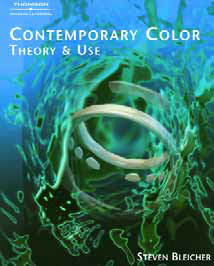Genesis 3
Every once in a while, I run across an area of design theory or philosophy that is so fundamental that I'm left to wonder how I've been able to do what I do for a living without a complete understanding of it. Color theory is one such field of study. For a long time now, I've known that the factor that very often makes or breaks a project is not the price of the materials or the presence of bells and whistles, but rather how well the colors work, both with each other and in the context of the overall setting. Even simple projects with modestly priced materials can be ranked among the beautiful if the colors work. By the same token, there are extremely elaborate projects that fail to live up to their potential (or fail altogether) when color choices are off base. My sense that this was something I needed to know more about led me to
What do you really want to know about the arts and crafts of landscaping and watershaping? That's an important question for each and every one of us in the trades to ask of ourselves, because without knowing what you want to know (or at least what you think you should know), all of the talk about the value and power of education is just so much rhetoric. I bring this up because, for a long time now, leaders and regular folks from all walks of the watershaping trades have been beating the educational drum. You read about it in every trade magazine, hear it in the vast majority of seminars and see it in the promotional messages of those who stage trade shows and conferences. Indeed, the
Change can be both exciting and terrifying. In my experience, the biggest changes often come with the potential for tremendous rewards, but also with significant risk. During the past two years, such change has come for our company in the form of an all-encompassing transformation that has involved every aspect of the way we do business. We've gone from trying to mass-produce affordable swimming pools and hardscape designs (and fighting for every dime we made along the way) to building only high-end, custom projects where we never compromise on quality - and make generous
Watching the arc of a learning curve can be fascinating - particularly when you're not the one who's going through the process. This is why I take such pleasure in
Good pool design isn't something that happens by chance. It's the product of a mental discipline applied to the entire setting, from one end of the yard to the other. It's the result of an over-arching vision that incorporates the watershape as a desirable component in a whole tapestry of textures, traditions, shapes, surfaces, highlights, spaces, contours and lines that please the eye, gratify the soul and bring a smile to the face of the observer. Perceiving this integration is often intuitive, but you can tell when it's been done right. You also can tell when the mark has been missed and can spend minutes or hours (or days) unraveling and considering everything from severe challenges and missed opportunities to lapses in focus or simple errors in taste and judgment. If your head's in the right place, you'll probably learn more from the problem pool than you will from the gem. Putting pool-industry heads in that right place is part of the thoughtful, reflective approach to pool design offered in the Genesis 3 Design School, which has convened three times and has now touched the sensibilities of more than 75 designers and builders. While school is in session, participants are immersed in an ocean of information on design principles, technical issues, presentation techniques and, perhaps most forcefully of all, on attitude and mindset. The basic message: Every pool can be special, appropriate and expressive of the

















